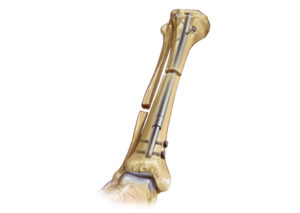Key pointers:
- What the extensor carpi radialis does and why it matters
- Common issues and injuries affecting this muscle
- Gentle stretches to improve flexibility
- Strengthening routines for wrist and forearm stability
- Ergonomic habits to reduce daily strain
- When to seek medical or physiotherapy support
Why Focus on the Extensor Carpi Radialis?
The extensor carpi radialis is a muscle in the forearm that helps extend and stabilise the wrist. It plays an important role in gripping, lifting, and repetitive movements such as typing, racket sports, or lifting weights. When overused or injured, this muscle can contribute to pain on the outside of the forearm or wrist, often linked to conditions like tennis elbow (lateral epicondylitis). Addressing this muscle through rehab exercises and proper ergonomics can reduce pain, restore function, and prevent future strain.
Common Problems with the Extensor Carpi Radialis
- Overuse strain: Often from repetitive wrist movements at work, sport, or gym.
- Tendon irritation: Tightness or inflammation can cause pain and tenderness.
- Weakness: Lack of strength in this muscle can lead to instability in the wrist and increase risk of injury.
Safe Stretches to Improve Flexibility
Gentle stretching helps relieve tension and improve movement in the wrist and forearm. Always move into stretches slowly and stop if pain increases.
- Wrist Flexor Stretch: Extend your arm in front, palm up. Use the other hand to gently pull the fingers back towards the floor. Hold for 15–20 seconds.
- Wrist Extensor Stretch: With the arm out straight, palm down, gently press the back of the hand down with the other hand until you feel a stretch along the top of the forearm. Hold for 15–20 seconds.
- Repeat 2–3 times on each side.
Strengthening Routines for Recovery and Prevention
Building strength in the extensor carpi radialis and surrounding muscles provides stability and protects against reinjury.
- Wrist Extension with Light Weight: Sit with your forearm supported on a table, wrist hanging off the edge, palm down. Hold a light dumbbell and slowly lift your hand upwards, then lower slowly. Repeat 10–15 times for 2–3 sets.
- Towel Twist: Hold a rolled-up towel with both hands and twist in opposite directions, as if wringing out water. This activates the wrist and forearm muscles in a safe, controlled way.
- Grip Strength Exercises: Use a soft stress ball or grip trainer to squeeze and hold for 3–5 seconds, 10–15 times.
Start with light resistance and gradually increase as strength improves.
Ergonomic Tips to Protect the Wrist and Forearm
Small daily adjustments can make a big difference:
- Keep wrists in a neutral position when typing, using the mouse, or lifting objects.
- Adjust your workstation so your forearms rest comfortably at desk height.
- Avoid prolonged gripping, take regular breaks to stretch and relax the hands.
Use proper form in sports or lifting to avoid unnecessary stress on the wrist.
When to Seek Professional Help
If pain, swelling, or weakness persists despite home stretches and strengthening, it’s important to seek advice from an orthopaedic specialist or physiotherapist. They can assess the injury, provide guided rehab, or recommend imaging if needed. Early treatment ensures you don’t develop long-term problems such as chronic tendon pain or reduced grip strength.
Supporting Your Recovery
Whether you’re recovering from an injury or aiming to keep your wrists healthy, caring for the extensor carpi radialis through stretches, strengthening, and ergonomics is key. A consistent routine helps restore mobility, build resilience, and reduce the risk of injury.
If you’re unsure about the severity of your symptoms or need tailored advice, consider consulting an orthopaedic specialist for a personalised rehabilitation plan.
Orthopaedic Care with Dr Sarbjit Singh
At the Centre for Advanced Orthopaedics, Dr Sarbjit Singh provides comprehensive care for wrist and forearm conditions, including tendon and muscle injuries linked to the extensor carpi radialis. His work in both adult and paediatric orthopaedics, as well as his focus on limb and joint function, ensures patients receive care that supports both recovery and long-term movement.
If wrist or forearm pain is holding you back, don’t ignore it.











